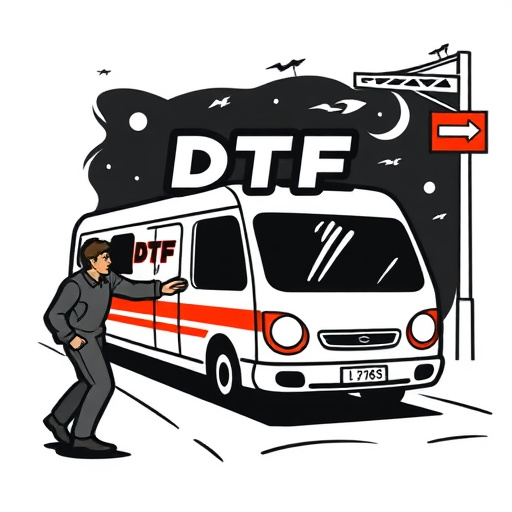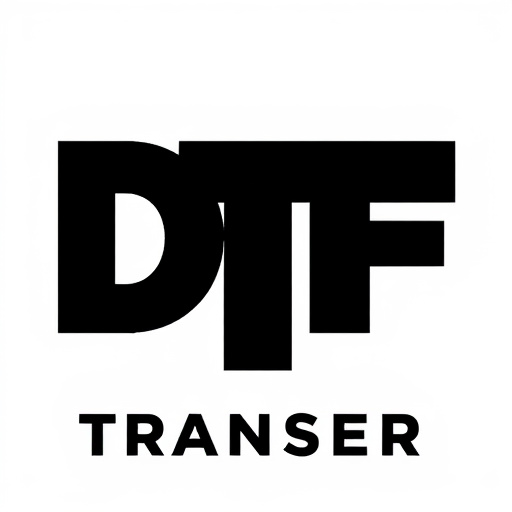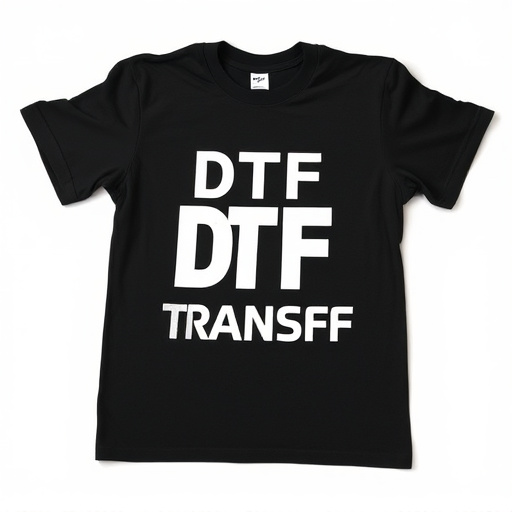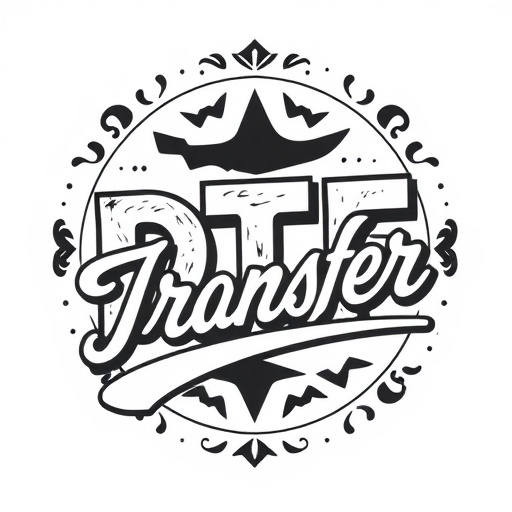Direct-to-Film (DTF) transfers are a cutting-edge method merging film aesthetics with digital precision, ideal for limited-edition prints, old film restoration, and archival materials. Key preparation steps involve cleaning the film, maintaining equipment, and selecting proper tools like high-resolution scanners and top-tier printers in a controlled workspace. A meticulous guide details the process, emphasizing clean source materials, consistent transfer conditions, and continuous comparison with originals for optimal results. Proper execution avoids common pitfalls like insufficient preparation, inadequate cleaning, timing errors, and mishandling during transfer, ensuring high-quality DTF transfers that honor original content.
Direct-to-film (DTF) transfers offer a revolutionary way to preserve and enhance your favorite films. This article provides a comprehensive guide on navigating the DTF process, from understanding the basics to ensuring optimal results. We’ll walk you through preparing your film, selecting the right equipment, and applying transfers with precision. Learn essential tips, avoid common pitfalls, and master the art of DTF for exceptional preservation. Discover the benefits and insights that make DTF a game-changer in home cinema.
- Understanding Direct-to-Film (DTF) Transfers: A Brief Overview
- Preparing Your Film for the Transfer Process
- Choosing the Right Equipment for DTF Transfer
- Step-by-Step Guide to Applying DTF Transfers
- Tips and Tricks for Achieving Optimal Results
- Common Mistakes to Avoid During DTF Application
Understanding Direct-to-Film (DTF) Transfers: A Brief Overview

Direct-to-Film (DTF) transfers are a cutting-edge process that allows for the precise reproduction of images and video directly onto film stock, offering a unique and versatile method of content creation. Unlike traditional printing techniques, DTF involves exposing unexposed film emulsion with digital data, creating a physical negative that can be used for printing or as an archival master. This innovative approach combines the artistic appeal of film with the precision and flexibility of digital technology.
By utilizing specialized equipment and software, DTF transfers enable artists and filmmakers to achieve remarkable results, preserving fine details and color accuracy. This method is particularly advantageous for creating limited-edition prints, restoring old films, or producing high-quality archival materials. The process starts with a digital source file, which is then converted into a mask that controls the exposure of the film, resulting in a negative that can be used for various output applications.
Preparing Your Film for the Transfer Process

Before initiating the direct-to-film (DTF) transfer process, preparing your film properly is paramount. Start by ensuring your film is clean and free from any debris or contaminants that could impede the transfer quality. Use a soft, lint-free cloth to gently wipe down the surface of the film, removing any dust or fingerprints. It’s also crucial to check for any physical damage, such as tears or creases, and make repairs as necessary to prevent these issues from affecting the digital output.
Additionally, consider the condition of your projector and the quality of the source material. A well-maintained projector with precise focus and color settings will yield better results. Ensure the film is properly wound on its spool and that the frame rate matches the specifications for optimal transfer. These initial preparations set the stage for a successful DTF transfer, ensuring you capture the best possible digital representation of your film.
Choosing the Right Equipment for DTF Transfer

When embarking on a direct-to-film (DTF) transfer project, selecting the appropriate equipment is paramount to achieving exceptional results. The right tools can make the process smoother and more precise, ensuring the preservation of original content integrity. Key components include high-quality scanners capable of resolving intricate details at optimal resolution settings. These scanners should support a wide color gamut to accurately reproduce vibrant hues. Additionally, investing in top-tier film printers is essential; they must offer exceptional image quality and color accuracy to match the source material perfectly.
To ensure consistency and precision, consider using specialized DTF transfer kits that include all necessary accessories. These kits often comprise cleaning supplies, alignment aids, and protective coatings tailored for the process. Furthermore, having a stable and controlled environment is crucial; a dedicated workspace with regulated temperature and humidity levels helps prevent damage to both equipment and the film itself. This attention to detail in choosing and preparing equipment sets the stage for a successful DTF transfer, delivering remarkable results that honor the original content.
Step-by-Step Guide to Applying DTF Transfers

Applying a Direct-to-Film (DTF) transfer involves a meticulous process that ensures high-quality results. Here’s a step-by-step guide to help you master this technique:
1. Prepare Your Materials: Start by gathering all necessary components, including your source material (the item to be transferred), the recipient film stock, and appropriate equipment like a transparent protective layer, cleaning supplies, and precision tools. Ensure your work area is clean and free from dust or debris that could compromise the transfer quality.
2. Pre-Treat Source Material: Clean the item thoroughly to remove any dirt, grease, or fingerprints. This step ensures optimal adhesion during the transfer process. Once clean, consider applying a thin layer of suitable adhesive to the surface of your source material, following the manufacturer’s instructions for the best results.
Tips and Tricks for Achieving Optimal Results

To achieve optimal results with direct-to-film (DTF) transfers, pay close attention to detail during the preparation phase. Start by ensuring your source material is in excellent condition; any defects or imperfections will be amplified in the final transfer. Clean and inspect the film frame by frame to remove dust, scratches, or debris that could compromise image quality. Consider using specialized cleaning solutions and tools designed for film restoration to maximize clarity and sharpness.
During the actual transfer process, maintain a steady and consistent temperature throughout. Extreme temperatures can cause warping or color distortion in the film. Use high-quality equipment and cables to minimize signal loss, ensuring optimal audio and video quality. Additionally, calibrate your monitor accurately to match the original film’s colors as closely as possible. Regularly compare the transferred content with the source material to make real-time adjustments and fine-tune settings for consistent, high-fidelity results with your DTF Transfer.
Common Mistakes to Avoid During DTF Application

Direct-to-film (DTF) transfers, while offering a host of benefits, come with their share of pitfalls if not executed properly. One of the most common mistakes is insufficient preparation. This includes using low-quality source materials, neglecting to clean and inspect film stock thoroughly, or failing to ensure proper alignment during the transfer process. Such lapses can result in grainy images, color distortion, or even permanent damage to the original film.
Another frequent blunder is overlooking the importance of timing. DTF transfers demand precise control over exposure and duration. Overexposure or underexposure can significantly impact image quality, leading to either a washed-out or overly dark transfer. Additionally, improper handling during the process, such as accidental touches or vibrations, can introduce dust, scratches, or other contaminants onto the film, compromising the final digital output known as DTF Transfer.














